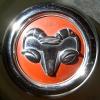-
Posts
6,983 -
Joined
-
Last visited
-
Days Won
76
Content Type
Links Directory
Profiles
Articles
Forums
Downloads
Store
Gallery
Blogs
Events
Everything posted by JBNeal
-
It was not uncommon for engine numbers to be removed by rebuilders, as vehicles were titled by engine number prior to VIN registrations...this was done presumably to prevent duplicate vehicle registrations when rebuilt engines were installed in different vehicles and subsequently sold, creating headaches for state taxing authorities especially when ownership is questioned in a legal proceeding. The fallback on engine identification is block casting date, combustion chamber bore and crankshaft stroke...block casting date is below the distributor; head casting date is above distributor.
-

Exhaust road draft tube and oil filler smokes
JBNeal replied to Haydenh's topic in Technical Archives
The consistent smoke out of the fill pipe + blue smoke out of the exhaust tells me that ya have blowby + oil consumption, which puts that flathead on the parh to a rebuild. Might be leaky valves from worn guides, might be worn rings from use or stuck rings from disuse. Inspection of the internals is warranted... The crank pulley might not be too bad, as long as the hub is true...might just be that the sheave got bent a little somewhere along the way, maybe somebody tried removing with a prybar instead of the proper puller. -
http://www.burtonlnorton.com
-
If ya see something, say something...FB can't crack down on fraud without a little help from ppl who know better ??
-
additional information - split lock ring tire mounting
-
FB tells me that they are going to close my report and follow up with DC directly once they've reviewed the account...oy vey
-
I had an unwelcome friend request this morning from an individual using DC's name and picture...reported it but it still makes me mad that someone is out there dishonoring the man with this kind of fraudulent activity ? https://www.facebook.com/profile.php?id=100060816017435
-
I haven't been too interested to investigate why this happens, but this forum has not been the only platform that I use where pics get rotated involuntarily. What seems to work consistently for me is that the original pic needs to be rotated 90° in an editor or viewer and saved, then rotated back 90° and saved, then the pic loads as desired. I have noticed in older posts that my pics have rotated, but I haven't gotten around to performing this procedure to correct that yet, what with all the ditches I gotta dig and whatnot
-
Something I read about years ago was how the O2 sensor would be in a vehicle's maintenance schedule every 60k or so. That sensor can wear out, as it is in the exhaust stream and subjected to heat + moisture from continued use...but also, the O2 sensor can become "lazy" as it ages, especially on vehicles not driven daily or only for short distances. The various sensor metals build corrosion that makes O2 sensor response sluggish, which adversely affects engine performance. I bought a Century Wagon and a Dakota longbed years apart, both garage-kept low miles specimens that were around 10 yrs old. They ran OK but weren't quite right...new O2 sensors really brought them engines alive, the Buick especially as it no longer had trouble climbing steep hills, both idled smoother on cool humid mornings. So I keep this in mind whenever I am dealing with anything that has older sensors on them, as the sensor may be sending erroneous data to the controller. This came up 5 yrs ago when Mom's Equinox spit out a code and smelled like an electrical fire one summer afternoon near its 7th yr...I cleared the code, inspected the buggy for damage, test drove with no problems...Mom complained for weeks afterwards that the buggy had no power on hills, I figured that the responsible sensors were right at the threshold of failure...a few weeks later, Dad swapped that chevy for a Journey and she drove that for years... Disconnecting the battery should be a harmless exercise that could reset the controller to default settings and allow for re-learn for optimum performance. Suspecting faulty imported parts is not a stretch to do these days.
-
Spring Specials might bring more $$$ from a collector, but that title basically gets ya a 2-tone paint job and any option that you could have gotten from any other truck...there are no special badges or extra shiny trim, and the only clue as to the originality of a Spring Special is a certain paint code found on its build card (which are not available until Michigan is classified as a covid-free workspace). Dodge trucks in general do not command a premium unless somebody has done a custom job or meticulous frame-off restoration and wants upwards of mid 5 figures "to break even". additional information - Spring Specials in the wild
-

1947 Dodge WC 1/2. Need emergency break drum Bolts
JBNeal replied to Life is Good's topic in Mopar Flathead Truck Forum
I replaced mine with grade 5 bolts with a similar shank but with coarse threads and a helical spring lock washer + prevailing torque locknut (not nylon)...to get the shank I wanted, I had to go to a longer bolt, but had plenty of clearance so didn't cut off excess to preserve the zinc plating. After 10k miles, no problems and still intact- 1 reply
-
- 2
-

-
typical engine removal is remove transmission, remove floorboards, remove engine with bellhousing and pedals attached, might be easier to remove steering column. The main difference between the 218 and 230 is the crankshaft and connecting rods...verify your engine number for specifics. Not a priority at this point but them spark plug wires look a little long...if you're going to upgrade, MSD makes a good universal set that could perform better.
-
additional information - Modified Wiring Diagram with Headlight Relays + Turn Signals
-

Help me ID this Chrysler drive train.
JBNeal replied to 5akman's topic in Mopar Flathead Truck Forum
The fluid coupling was a dampener on trucks that reduced wear on universal joints and rear differential bearings, also allowed starting and stopping in traffic without pushing in the clutch pedal...sort of a bridge technology between manual and automatic transmissions. The dust cover looks wet enough that maybe that flathead rear main seal is incontinent... It kinda looks like the speed gearshift has been cut off above the deck; I see the F-R, up-down, elev.tilt, and park brake levers. Maybe a previous owner just set the speed in low cuz that's all they needed...? additional information - Fluid Drive General Dimensions -
additional information - road timing
-
additional information - speedometer cable lubrication
-

Help me ID this Chrysler drive train.
JBNeal replied to 5akman's topic in Mopar Flathead Truck Forum
looks like a 3spd attached to Forward-Reverse that is mounted to the bellhousing, but that's just a guess...ya might can source clutch repair service locally, inquire at a local forklift repair to get started, they might be able to point you in the right direction -
Has the beast already drawn 1st blood? That's a true bonding experience
-
Mopar 1238415 is the now rare Cleveland type universal joint, but it is not as hard to find if you know where to look
-
additional information - D25 wiring diagram for horn relay looking at your relay terminal corrosion, this may be an issue driving up impedance, which could also be present internally. The risk of pulling terminals off while rocking the relay out of its cover is significant. I have sometimes remedied this by massaging the metal cover to break the base loose enough to insert a dental pick into the corners, then work around the edge to further open up the cover to allow for relay withdrawal. This is a tedious hands-on procedure that does not always work given the fragile state of the relay internals. So whenever I see corroded relay terminals, I assume the internals are just as bad and attempt to source a replacement.
-
have ya reached out to QuietRide? I've heard that their customer service is responsive...
-
When I replaced the ball joints on the QuadCab, the new ball joints were mechanically fastened with grade 5 bolts supplied. Grade 8 bolts have a higher shear stress rating than grade 5s, and tho the QuadCab frame is 100k, the control arms sure felt and sounded like 50k. The older Dodge frames more than likely have 36k, so going grade 5 on body attachments and grade 8 on suspension is good practice. As the original rivets clamped and locked parts in place by expanding in mounting holes when set that were probably not concentric, replacement bolts are only clamping in mounting holes, with some space in the mounting holes for parts to move around. To restrict this movement, more final torque must be applied to the bolts to generate enough clamping force equivalent to the original rivets clamping and locking force.
-
Demonstration at :25
-
truck picture B-1-D-126: Valentine's Day ice breakers ?




